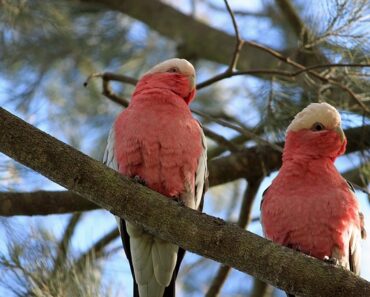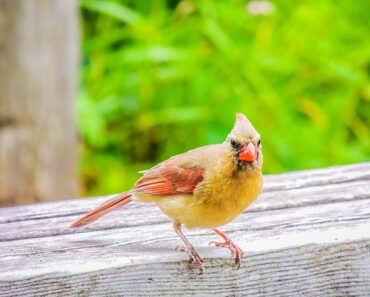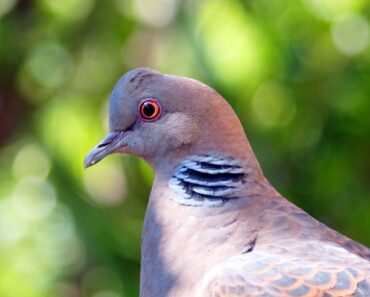
Of all the birds that can be raised in cages, the canary is certainly the most well known. It is also very appreciated by children for its good mood and playfulness. Moreover, all the children once marvelled at the jokes of “Titi and Grosminet”, featuring a cat and a canary.
Owning one in a cage can be attractive, it is small, does not take up much space, sings and brings joy to a home, but be careful though, since canaries are rather fragile birds, and it is better to be informed before adopting this little bird.
What is a canary?
What is commonly known as a canary is in fact the domestic form of the Canary Serin (Serinus canaria) which, as its name indicates, is native to the Canary Islands. A canary is a bird of the order Passeriformes, the order containing the most different species of birds (for example, the sparrow).
It is a mainly granivorous bird, with a tendency to be frugivorous of small size, since it measures between 12 and 20cm long on average. Its colors can be very variable. Indeed, we can find yellow canaries (the best known), but also varieties of white, orange, bicolor, pinkish-red, gloster (color close to the colors of a sparrow), etc..
This small animal is able to live between eight and ten years in captivity, even if some specimens have lived for about twenty years.
Canaries in history
Since antiquity, the canary has been a domestic animal and historically it has been used very little by humans except in coal mines. In fact, a canary was locked in a cage that was taken down into the mine with the miners. The bird was used as an alarm system since toxic gases such as carbon monoxide or carbon dioxide contained in the mine deposits were deadly to the bird long before they could affect humans. When the canary became agitated in its cage, it meant that a toxic gas leak was taking place, and that the men had to get out of the mine in an emergency.
Nowadays, canaries are observed in the laboratory to study their complex mode of communication, or in nature as an environmental indicator, since this small bird has the ability to detect nearby environmental hazards, causing it to flee its natural habitat, allowing scientists to anticipate potential disasters.
How to care for a canary in captivity
The habitat of the canary in captivity
The canary, like all birds in captivity, will need a cage, which will serve as a habitat. The cage should be at least 60cm long, 40cm wide and 50cm high for a single canary. To accommodate two individuals the minimum will be a cage 90cm long, 40cm wide, 50cm high.
The interior of the cage will of course have to be arranged. It will need several perches so that it can rest and observe its environment, but also a watering trough, a feeder and small toys to be hung up so that it can occupy itself.
There are several ways to arrange the bottom of a canary’s cage, all with advantages and disadvantages:
not putting anything on: obviously the least recommended solution, since in addition to providing no comfort for the canary on the floor, it requires cleaning the floor of the cage on an almost daily basis.
newsprint: a rudimentary method but one that works. However, it will have to be changed two to three times a week.
aniseed sand: sold in pet stores, aniseed sand provides the comfort necessary for the canary, in addition to camouflaging bad odours. It will nevertheless be necessary to appreciate the smell of the aniseed, which is not the case of everyone.
Wood shavings: a good alternative for odors and comfort, but the shavings are quite dusty.
gravel/oyster shell mixture: this mixture, available in pet stores, offers a good comfort to the canary, in addition to allowing it to peck at the ends of crushed oyster shells, which provides it with calcium, very useful for its beak.
The canary will particularly appreciate having a bathtub in its cage, the water of which will be changed every day with water at room temperature, because indeed, the canary loves to take baths. It is not uncommon to see it splashing around in the water singing to clean its feathers.
Finally, the location of the cage will be very important. Ideally, the cage should be placed high up, because the canary loves to observe what is going on around him, while feeling safe. It will be necessary to avoid placing the cage in full sun, because the fragility of the canary does not allow him to resist strong heat for too long. Placing the cage in a room susceptible to regular drafts is also a very bad idea for the health of this little bird.
The sociability of the canary in captivity
The canary is an animal that will need life around it to be happy. If the house in which it is regularly found is empty, it will quickly lose its joie de vivre and will let itself wither away, even if it is properly fed.
If, however, you are absent a lot, it is always possible to adopt a canary, but you will have to take two of them so that they can keep each other company (adapting of course the size of the cage to avoid any conflict). If you wish to avoid too intense reproduction, do not choose a couple because the male could sexually harass the female to the point of killing her from exhaustion. It is therefore better to choose two males or two females knowing that only males sing: you are therefore warned if you want a singing canary or, conversely, as calm as possible.
Canary feeding in captivity
Feeding a canary in captivity is quite simple, since the canary-adapted seed mixes that can be found in most pet stores are perfect for them. You can also provide them with food supplements, such as small pieces of apple, pear, banana, or salad leaves.
However, avoid any processed foods that are too sweet (for example chocolate or industrial cakes), which are very bad for their bodies and can be fatal to them.
Finally, adding a mineral stone will allow them to carve their beak, while providing them with a supply of minerals. Cuttlefish bones can also do the trick, providing them with calcium.
Canary reproduction in captivity
From February, the mating season starts for the canaries. If you have a couple, you can start placing straw and hay in good quantity in the cage so that they can make a nest. It is also possible to buy them an artificial nest to be fixed directly in the cage.
The female, once fertilized by the male, will lay two eggs; the second will begin about 40 days after the first. From March onwards, it will be necessary to maintain a temperature of about 20°C in the room, as well as a good level of humidity in the air by placing a water tank on the radiator for example.
Once egg-laying begins, the female will lay one egg per day, often in the morning, until she reaches three to five eggs. She will incubate her eggs for 13 days. It is recommended to give the female a rearing feed to regain the energy she lost during the laying process.
Once hatched, the young will be fed most often by the father who will feed them, while the female will take care of cleaning the nest. The chicks will begin to leave the nest at about 20 days of age, and will be completely weaned at 30 days of age. The chicks must be removed from the cage before the start of the second clutch, otherwise they will be rejected, and sometimes killed.






